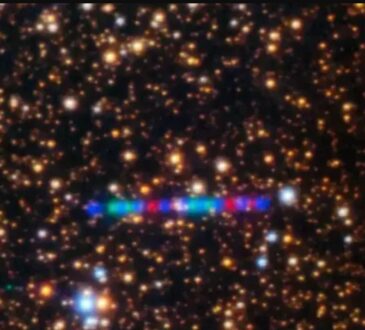Stephen Hawking and Einstein’s decade-old predictions finally proved right after breakthrough black hole collision

More than a hundred years ago, Albert Einstein proposed an idea that seemed almost impossible to test. In his theory of relativity, published in 1915, he predicted that when very heavy objects in space move or collide, they would send out tiny ripples in the fabric of space and time itself.
These ripples, known as gravitational waves, would spread across the universe like the waves you see when a stone is dropped in a pond.
Einstein believed this was the only way to detect something as extreme as two black holes colliding. But at the same time, he admitted he did not think we would ever have the technology to measure such faint signals, because by the time those waves reached Earth, they would be incredibly weak.
Decades later, another brilliant physicist, Stephen Hawking, added to this mystery. In 1971, he suggested that if two black holes collided and became one, the new black hole’s surface area could never be smaller than the combined areas of the two original black holes.
In other words, the universe follows strict rules about how black holes can merge, and the result always has to be equal to or greater than what existed before. Like Einstein’s prediction, Hawking’s idea was a bold claim — and for many years, it remained unproven because no one could see black holes directly.
Everything began to change with the creation of LIGO, the Laser Interferometer Gravitational-Wave Observatory. Built in Louisiana and Washington, LIGO was designed to be sensitive enough to pick up on the tiniest ripples in space-time caused by distant cosmic events.
In September 2015, LIGO made history when it detected gravitational waves for the very first time. These waves came from two black holes that had crashed into each other more than a billion light-years away. The discovery was so revolutionary that the scientists behind it received the Nobel Prize, since this confirmed that black holes and gravitational waves were real, not just theoretical.
But the story did not stop there. In January of this year, astronomers recorded another black hole collision, but this time with far more detail than ever before. Thanks to improvements in the instruments, they were able to observe the entire process with new clarity.
The two black holes involved were each about 30 to 35 times the mass of our sun, and they orbited each other in a nearly perfect circle before finally merging.
When they combined, they formed a new black hole about 63 times the mass of the sun, spinning at an astonishing rate of 100 revolutions every second. All of this happened about a billion light-years from Earth, but LIGO’s delicate instruments were still able to detect the gravitational waves they sent out.
Astrophysicist Maximiliano Isi explained that this event has given scientists a deeper understanding of black holes. Despite their complexity and the mystery that surrounds them, black holes can actually be described with surprising simplicity.
According to theory, all the information needed to describe a black hole comes down to just two things: how massive it is and how fast it is spinning. Everything else, no matter how complicated it seems, is contained in those two numbers.
To test this, scientists use the “ringing” of a black hole, which is similar to striking a bell. When a bell rings, the sound tells us about the size and shape of the bell, and even about the material it’s made of. In the same way, when two black holes merge, the new black hole gives off gravitational waves that “ring” across the universe. By listening to the pitch and length of that ringing, scientists can determine the black hole’s mass and its spin.
With this latest collision, researchers were able to identify two distinct parts of the ringing, which proved beyond doubt that the new black hole could indeed be described by mass and rotation alone. This lines up perfectly with what both Einstein and Hawking had predicted decades earlier. For the first time, scientists are seeing this truth with great clarity, almost as if they are watching the rules of the universe being written in real time.
The significance of this goes far beyond just confirming old theories. It shows that humanity now has the tools to explore some of the most mysterious parts of the cosmos. Black holes, once thought to be impossible to study, are becoming windows into understanding how the universe works at its deepest levels. These discoveries are not only confirming what great minds like Einstein and Hawking once imagined, but also opening doors to new questions about the origin, evolution, and future of the universe itself.




